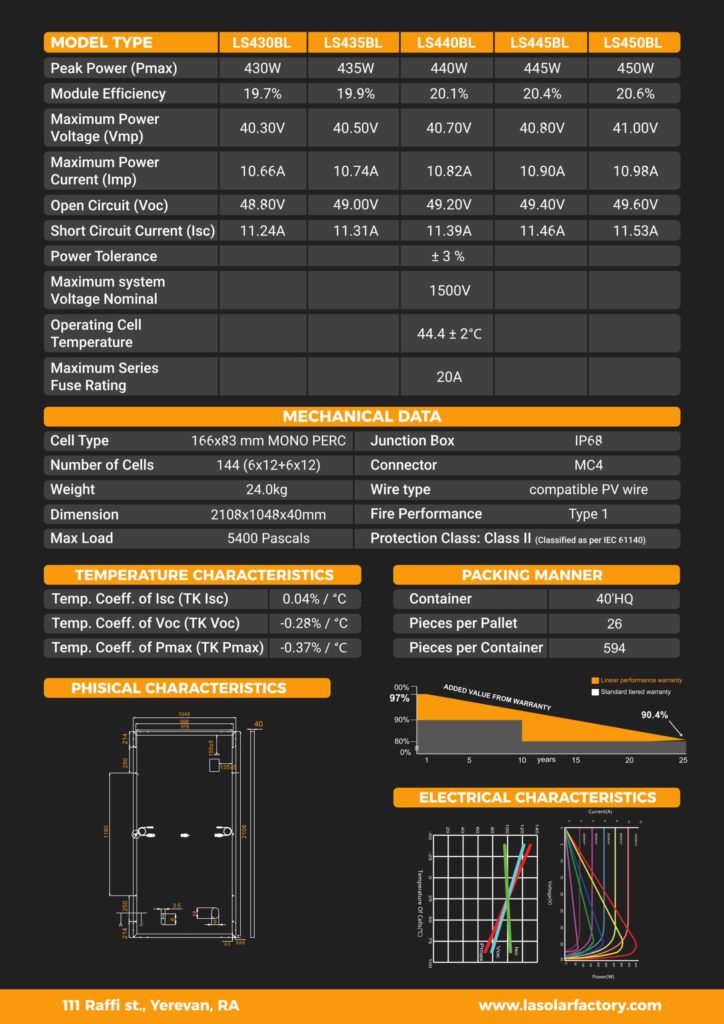Solar Panel Info San Francisco
Installing Industry's Best
For any questions regarding the solar system, equipment and roof issues make sure to contact customer support by email at customerservice@lasolargroup.com or call us on 818 373 0077.
Our customer specialists are ready to reach out to you for any inquiries and issues.
If any question is beyond their responsibility, then they will direct you to the corresponding department.
On this page, you can find most of the frequently asked questions that our customer support team receives.



Solar panels come in many varieties to meet the different cost, performance, size, efficiency, and aesthetic needs of customers. The type of solar panels you obtain will vary based on the solar panel manufacturer.
Solar panels utilize the following major technologies
- Polycrystalline Silicon (cheaper, moderate efficiency, usually blue)
- Monocrystalline Silicon (considered “premium,” high efficiency, requires less roof space, typically black)
- Thin-Film (cheaper, low-moderate efficiency, could be flexible, has lower and better temperature degradation)
Solar cells made from these technologies are usually connected in sets of 60, 72, or 96 cells. Once connected, they form a solar panel or module. In turn, the panel or modules form arrays (e.g., groupings on different roofs). It is common to collectively refer to the arrays as the solar system.
Example: Panasonic N330 (VBHN330SA16) panel comprises 96 N-Type, monocrystalline cells.
POWER RATING (WATTS)
Solar panels are rated by their DC power output in watts (W) under standard test conditions (STC) and real-world test conditions (PTC). The closer the PTC value is to the STC, the better the real-world performance would be to the marketed performance. When looked at as a ratio (PTC/STC), the ideal would be 100%.
Example: Panasonic N330 (VBHN330SA16) panel’s STC rating is 330W, and the PTC rating is 311W, resulting in a PTC/STC ratio of 94% (which is very good for this technology).
SOLAR PANELS EFFICIENCY
A solar power system’s efficiency measures its ability to convert light into electricity. The higher the efficiency, the better. Residential efficiencies in the low 20% range are considered excellent. Higher efficiency cells indicate that fewer panels are necessary to attain the same panel wattage; thus, they require less roof space.
Alternatively, a panel utilizing high-efficiency cells would produce higher wattage in the same area.

The comparison metric is (PTC Watt rating/SF). STC watts are also applicable, but PTC is a more realistic and conservative value. When comparing, the value used needs to be consistent.
Example: Panasonic N330 (VBHN330SA16) panel’s efficiency rate is 19.7, the power rate is 306 PTC Watts and it takes up (41.5″ x 62.6″ = 18sf) resulting in 306W/18sf = 17W/SF.
Efficiencies depend on the cell capability and the number of cells used. Some high-wattage panels use a greater number of lower efficiency cells at the cost of a larger panel size.
Monocrystalline silicon cell panels are the most efficient and best solar panels and come with a higher price tag. If you have enough roof space available, it may be better to use more or larger panels with lower efficiency cells.
Doing so will lower your net cost, resulting in a shorter payback period and higher ROI.
TEMPERATURE DEGRADATION OF SOLAR MODULES
Most solar panels’ power degrades with higher temperatures – the hotter the panel, the less it produces. This percentage decrease per degree of increase over 25°C is referred to as the temperature coefficient. The lower the coefficient, the better.
To keep the panels cool, install them as high as possible above the roof surface (to provide better air circulation), usually at least 6″.
WARRANTED TOLERANCE
An average 330W panel may be more or less than 330W. Most solar panel manufacturers provide a warranted tolerance percent that limits this variance. Most premium category panels have only a positive tolerance. This means that the actual output will be between 0% and the warranted tolerance value on average.
BYPASS DIODES
When one or more solar cells in a panel do not produce electricity due to failure or shading, the solar panel is negatively impacted.
To reduce this impact, the cells are broken up into groups (usually 20 cells/group in a 60-cell panel, or 24 cells/group in a 96-cell panel), with each group capable of being “bypassed” in case of low producing cells within that group. Therefore, the remaining groups will still perform.
Example: Panasonic N330 (VBHN330SA16) panel consists of 96 cells and is broken up into 4 cell groups of 24 cells each and having 4 bypass diodes.
BI-FACIAL
Bi-Facial panels have a double glass construction that generates solar energy from both the front and back sides of the solar panel. Since the panels are ultra-thin, they can also be frameless with a plastic back sheet. These are aesthetically attractive options to install on residential roofs, terraces, and carports.

When installed on a highly reflective roof surface, the technology can operate at its fullest potential. In this case, the panels can produce 24% more energy than standard mono-facial modules. Bi-facial panels can generate up to 100% AC output vs. 80-85% AC output from conventional panels.
This output change is due to its low thermal and light degradation. Module efficiencies are currently up to 22%, with panel output between 310W – 370W. A 25-year power warranty comes with 95% efficiency from years 1-5 and 83% efficiency from years 6-25 at 0.6% degradation.
FRAMELESS SOLAR PANELS
Their smooth black design will look great on any roof with almost invisible cell lines. These panels have high-efficiency, thin-film technology that has less degradation than mono or poly modules.

The purpose of the film is to generate consistent power year-round, even during cloudy and overcast days or when the sun is at a low angle during the winter months.
Bay Solar Group works with such solar panel manufacturing companies as Panasonic, LG, Talesun, ReneSola, Q Cells and many more. All of them have created a reputation of high efficiency and best-quality.
